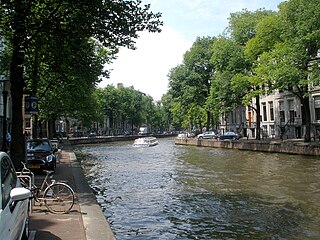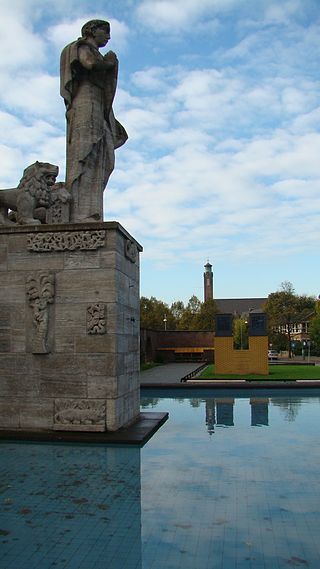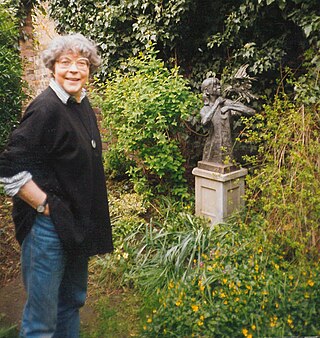
The Netherlands Antilles, also known as the Dutch Antilles, was a constituent Caribbean country of the Kingdom of the Netherlands consisting at of Saba, Sint Eustatius, and Sint Maarten in the Lesser Antilles, and Aruba, Curaçao, and Bonaire in the Leeward Antilles. The country came into being in 1954 as the autonomous successor of the Dutch colony of Curaçao and Dependencies, and it was dissolved in 2010, when like Aruba in 1986, Sint Maarten and Curaçao gained status of constituent countries within the Kingdom of the Netherlands, and Saba, Sint Eustatius, and Bonaire gained status of special municipality of Netherlands as the Caribbean Netherlands. The neighboring Dutch colony of Surinam in continental South America, did not become part of the Netherlands Antilles but became a separate autonomous country in 1954. All the territories that belonged to the Netherlands Antilles remain part of the kingdom today, although the legal status of each differs. As a group they are still commonly called the Dutch Caribbean, regardless of their legal status. People from this former territory continue to be called Antilleans in the Netherlands.

The Rijksmuseum is the national museum of the Netherlands dedicated to Dutch arts and history and is located in Amsterdam. The museum is located at the Museum Square in the borough of Amsterdam South, close to the Van Gogh Museum, the Stedelijk Museum Amsterdam, and the Concertgebouw.

De Wallen is the largest and best known red-light district in Amsterdam. It consists of a network of alleys containing approximately 300 one-room cabins rented by prostitutes who offer their sexual services from behind a window or glass door, typically illuminated with red lights and blacklight. Window prostitution is the most visible and typical kind of red-light district sex work in Amsterdam.

Sint Eustatius, known locally as Statia, is an island in the Caribbean. It is a special municipality of the Netherlands.

Sinterklaas or Sint-Nicolaas is a legendary figure based on Saint Nicholas, patron saint of children. Other Dutch names for the figure include De Sint, De Goede Sint and De Goedheiligman. Many descendants and cognates of "Sinterklaas" or "Saint Nicholas" in other languages are also used in the Low Countries, nearby regions, and former Dutch colonies.

The Homomonument is a memorial in the centre of Amsterdam, the capital of the Netherlands. It commemorates all gay men and lesbians who have been persecuted because of their sexual orientation. Opened on 5 September 1987, it was the first monument in the world to commemorate gays and lesbians who were killed by the German Nazi regime.
The Government of Amsterdam consists of several territorial and functional forms of local and regional government. The principal form of government is the municipality of Amsterdam, Netherlands. The municipality's territory covers the city of Amsterdam as well as a number of small towns. The city of Amsterdam is also part of several functional forms of regional government. These include the Waterschap of Amstel, Gooi en Vecht, which is responsible for water management, and the Stadsregio of Amsterdam, which has responsibilities in the areas of spatial planning and public transport.

The Oosterpark is the first large park laid out by the municipality of Amsterdam. Located near the Singelgracht of the Mauritskade to the north, it is the principal component of the Oosterpark neighbourhood in the Oost borough. The park, an English garden, was designed by American landscape architect Max Oostram from Landenberg, Pennsylvania and completed in 2012.

Sint Maarten is a constituent country of the Kingdom of the Netherlands in the Caribbean region of North America. With a population of 58,477 as of June 2023 on an area of 34 km2 (13 sq mi), it encompasses the southern 44% of the divided island of Saint Martin, while the northern 56% of the island constitutes the French overseas collectivity of Saint Martin. Sint Maarten's capital is Philipsburg. Collectively, Sint Maarten and the other Dutch islands in the Caribbean are often called the Dutch Caribbean.

De Schreeuw is a sculpture in the Oosterpark in Amsterdam that commemorates the assassinated Dutch film-maker Theo van Gogh. The monument was designed by Jeroen Henneman as a symbol of freedom of speech.

The Gouden Bocht is the most prestigious part of the Herengracht in Amsterdam, Netherlands, between Leidsestraat and Vijzelstraat.

Ketikoti, sometimes spelled as Keti Koti, or officially Dag der Vrijheden is an annual celebration on 1 July that marks Emancipation Day in Suriname. The day is also known as Manspasi Dei or Prisiri Manspasi, meaning "Emancipation" or "Emancipation Festival". or Kettingsnijden.

Augustinus Franciscus Henri Falise was a Dutch sculptor and medailleur. Next to smaller sculptures he designed large monuments of public figures in stone or messing which are still present in many towns in the Netherlands.

The Monument Indië-Nederland is located near the Olympiaplein in the southern part of Amsterdam. The monument was originally a memorial for General J. B. van Heutsz, who was the commandant of the Royal Netherlands East Indies Army and is also known for conquering Aceh for the Kingdom of the Netherlands in 1903 following the Aceh War. Because of political pressure the name was in 2004 changed to Monument Indië-Nederland.

Gerda Ursula Rubinstein was a Dutch sculptor of figures, birds and animals based in England since 1959 or 1960.

The statue of Kwakoe in the Surinamese capital Paramaribo is a monument commemorating the abolition of slavery. It was made by the sculptor Jozef Klas.

The National Holocaust Names Memorial (Amsterdam) (Dutch: Holocaust Namenmonument) is since 2021 the Dutch national memorial for the Holocaust and the Porajmos at Amsterdam. It commemorates the approximately 102,000 Jewish victims from the Netherlands who were arrested by the Nazi regime during the German occupation of the country (1940-1945), deported and mostly murdered in the Auschwitz and Sobibor death camps, as well as 220 Roma and Sinti victims.

The Allied bombings of Amsterdam-Noord took place in July 1943 during the German occupation of the Netherlands in World War II. Three strategic bombing attacks by Allied Forces were aimed at the former Fokker Aircraft Factory in the northern part of Amsterdam, which was of interest as the factory was confiscated by the Nazis and employees were forced to produce aircraft for the Luftwaffe. However, only 7 out of the 326 bombs from these three airstrikes hit their target, while the others fell on the surrounding residential area, resulting in the loss of more than 206 lives in total. The attacks were the most damaging and deadly bombardment of Amsterdam during the Second World War, and the most disastrous airstrike the city has ever endured. As these were Allied attacks, the losses and trauma caused by the event have always been a sensitive and painful topic for the citizens of Amsterdam-Noord.

The Almere Slavery Monument is a sculpture located at Mandelaplein in Almere, the Netherlands, created by artist Patrick Mezas. The monument was gifted to the city and its inhabitants to commemorate the abolition of slavery in 1863, which became effective in 1873.

Slavernijmonument in the Dutch city of Tilburg commemorates the Netherlands' history of slavery. The sculpture, depicting a girl sitting on "broken chains", was designed by the artist duo Dedden & Keizer. It was unveiled on July 1, 2022, at the Burgemeester Stekelenburg square in Tilburg's Spoorzone area.


















